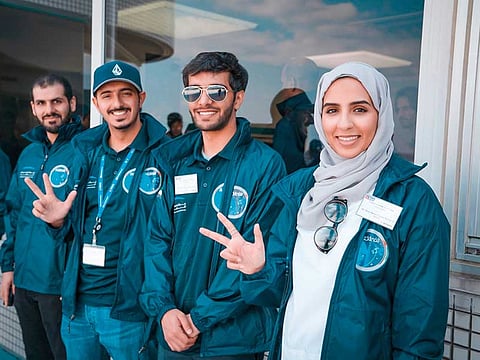Meet the young team behind KhalifaSat
Most of them are in their 20s, some even fresh graduates

Dubai: Most of them are in their 20s, some even fresh graduates. But one thing united them — the passion to prove the calibre of this young nation in the space arena.
Seventy Emirati male and female engineers tirelessly worked to design, build, test, and launch the KhalifaSat for five years to put their mark in space and contribute to mankind.
Some of the engineers were part of the team that studied and worked in South Korea to build the DubaiSat-1 launched in Kazakhstan in 2009 and DubaiSat-2 launched in Russia in 2013.
Both are earth imaging satellites similar to KhalifaSat.
Others were part of the first generation team that benefitted from the knowledge transfer from the South Korean programme while there were those who worked on Nayif-1, the UAE’s first nanosatellite, during their university years. This cubesat was launched into space in 2017.
None of them shied away from long working hours, starting most times at 6am, extending until 4pm at times to meet strict deadlines.
But this does not mean they forgot to have fun while at work inside the lab. Far from it, really, one of the engineers told Gulf News earlier.
Amer Al Sayegh, KhalifaSat project manager, did not deny the high-pressure environment in space tech engineering. But he said his team managed to exceed expectations.
“Usually the launch is a very tense moment but our team is now experienced because we have had two previous missions to space and this is our third one. Yes, the KhalifaSat launch is unique. It has its own expectations, but the team is quite experienced and able to handle such missions,” Al Sayegh told Gulf News.
“We are very proud of this team because they have been working on satellites for eight years now and they will continue to do so with KhalifaSat now in space. This is a team which is young but well-equipped with knowledge and experience.”
Sign up for the Daily Briefing
Get the latest news and updates straight to your inbox


